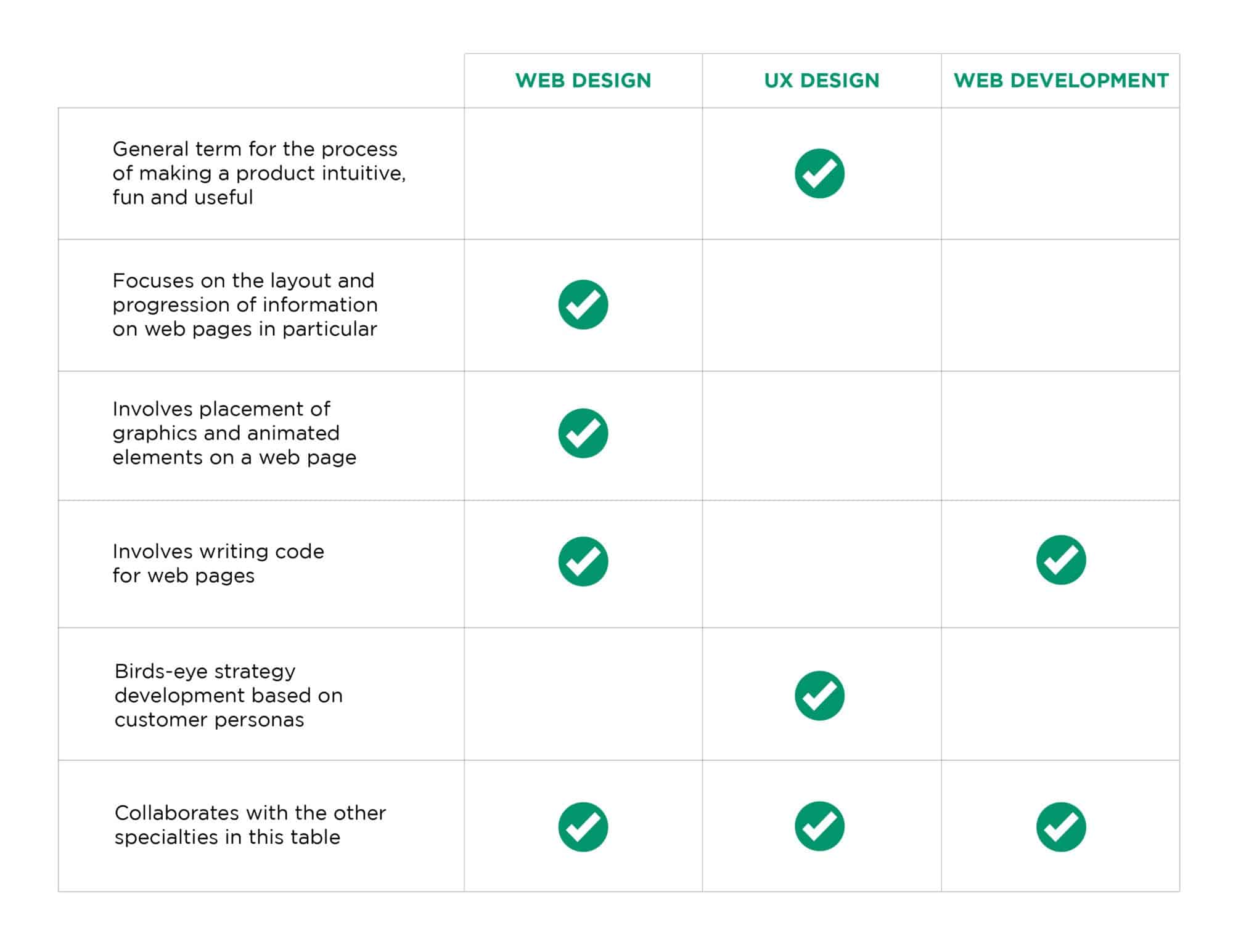What is web design? And more importantly, how can it strengthen your business and help you express your key messages in a compelling way? Because online environments are the preferred habitat for most modern consumers, almost all businesses have to offer a digital gathering place to their audiences. You’ll soon find that making those spaces appealing for users — in both form and functionality — can mean the difference between a low and a high bounce rate (or conversion rate) and the difference between low and high perceived authority.
The various nuances and aspects of creating appealing web pages fall under the umbrella term web design, which is an essential component of any marketing strategy. With the right planning, and, if appropriate, the support of a web design partner like Communications Strategy Group (CSG®), your company website can help you attract leads, achieve search engine optimization, create purchase opportunities and prompts and give potential customers confidence in the choice they’re making.
What Is Web Design?
Web design is the art of presenting information on a website according to design principles to make it clear, comprehensive, beautiful, persuasive and useful. Web designers must take into account the preferences of users (for example, whether they are going to be viewing the page on desktop or mobile devices, and what page structure and design elements will best support those formats) as well as a company’s brand voice and sales objectives.
This field has grown at a rapid pace in large part due to the importance a well-designed page has proven to have on the typical digital customer journey. For example, research shows that 75% of people form an immediate impression of a company from the look of its website alone and they do this in 50 milliseconds (0.05 seconds)! Meanwhile, the rate at which viewers leave a website prematurely goes up to 38% after three seconds. Clearly, the way your web page functions, including factors such as load times and information architecture, and the way it looks have a massive impact on consumer behavior.
Web Design vs UX Design vs Web Development
The terms web design, user experience (UX) design and web development describe related but very different skills. See the image below for how they’re similar and how they’re different:

UX design is the most general field of the three. It refers to making a product, including but not limited to websites, serving users’ needs and providing an enjoyable experience. UX designers can accomplish this by discovering audience demographics, determining audience motivations and pain points, and then shaping the design of a product to suit those particulars and running tests. This process may start with wireframes that are then given to a web designer to guide their work.
Within the category of UX design is web design, which refers to the design of web pages, especially the visual elements on them. This can mean high-level considerations of look, layout and content to suit company brands and messaging, or it can mean coding and more detailed tasks. Web designers are synthesizers, taking the broad information provided by UX design and applying it to a web page. They have to be able to traverse from the general to the special, and collaborate with web developers if they run into highly technical coding issues.
Finally, web development is the narrow and deep field of actually writing the code that governs these web pages. All three professions require communication with the others to ensure that what users see at the end matches their needs and preferences.
Benefits of Having a Good Web Design For Your Audience
Compelling web design offers companies a range of benefits that all add up to a better reception from your target audience and more sales. Here are some of the top benefits of making your business web pages attractive and easy to use:
Professional Image
You don’t have long to win customers’ trust with your website. Even if you have a fantastic product, a cluttered, unattractive or glitchy website will erode their confidence in your competence or authority in your industry. On the other hand, showing them a page that looks good, is easy to navigate and anticipates their needs and questions will allow the value of your offerings to shine through.
Better SEO Performance
If people are getting what they like and need from your web pages, they’re likely to stay longer, read more, visit links and recommend you within their own networks. All of this gives you a boost in SEO performance that will drive further organic traffic, raise your ranking in search results and begin the upward cycle of visibility and conversions that starts with enticing a small number of visitors to stick around.
Cost Savings Over Time
A company that invests upfront in its website will be able to sit back, create content to flesh it out and not worry that the overall look or feel of the site is negatively affecting customer response. Meanwhile, a company that tries to save money with a bare or poorly designed website is liable to lose conversions that might have otherwise come through and incur updates and more work on the site that over time actually erase whatever savings the company achieved initially.
Solidifies Brand Look and Voice
Everything a company puts out is an opportunity to strengthen its brand voice by remaining true to the look and feel that UX design dictates it should maintain. This applies to a website as well. Something as simple as keeping brand colors and fonts consistent can boost brand recognition by 80%. Good web design considers brand communication factors and can even take them further by incorporating the symbolism and implied messaging of your company on its page.
Makes Updates Easier
No web page will remain current forever, but having a solid foundation makes it easier to make updates down the line. You don’t want to be rebuilding your website from scratch every five years because poor design has made periodic additions difficult or impossible.
Competitive Edge
The modern commercial landscape demands digital sophistication. Companies can’t get away with subpar websites when all their competitors look polished and use UX design principles to maximize the value of their resources to browsers. Putting energy into this element of your marketing will attract leads, keep them moving through your funnel and ensure that you are on good footing relative to your competition.
Web Design Tools
There are different ways to create a website. The two main options are desktop apps and website builders. Choosing which tool to use comes down to the unique needs and limitations of an individual company with respect to budget, timetable, goals, the amount of work acceptable to maintain the site and the desired user interface design and user experience design.
Desktop Apps
Desktop apps like Photoshop allow designers to map out a prototype of a website, nailing down the particulars of user interface and user experience — such as look, feel, information architecture and animations — before sending the design to web developers who will actually perform the arduous task of coding for each element the designer specifies. This option is usually reserved for large or complex sites, since it requires input from multiple specialists and therefore costs more and takes longer.
Website Builders
Website builders, or content management systems, such as Wix or Squarespace, on the other hand, allow users to build sites using templates, with many, but not unlimited, options for tweaking. This is a good option for those who don’t know how to code and don’t want to involve a developer. Typically the sites you can produce with these platforms are less complex and less interactive than those you would get with a custom build, but that doesn’t mean content management systems aren’t capable of achieving great results.
6 Principles of Website Design
There’s a lot that goes into making a website look good and lead users through the flow of information in a way that is intuitive and satisfying. Here are some of the things designers should think about when sketching out a website.
Balance
Balance between visual elements means that none of them overpower the others (unless that’s the intended result). Designers can achieve this by considering the symmetry or asymmetry, relative size, and relative position of pieces on a page for the best effect.
White Space
White space is one of the most important, and most overlooked, factors of design in website building. Leaving enough space in between prominent visuals or text draws the eye to them, gives users a chance to absorb information, and helps create overall harmony between the elements on the page.
Rhythm
Rhythm is strategic repeating of phrases, graphics, elements, etc., on a page to evoke a certain feeling, emphasize a certain message or otherwise shape your page to give users a sense of coherence and narrative structure.
Contrast
Contrast refers to placing elements side-by-side in a way that highlights their differences (for example, you might place light and dark elements together, or delicate and bold fonts). This can lend your page a sense of movement, organicity and excitement.
Hierarchy
Hierarchy can be tricky, but it is crucial to a page’s performance. This refers to deciding which elements are most important on a given page, and where they should be positioned, and what they should look like, so as to instantly convey to the viewer their place in the ranking of information. Doing this poorly means that viewers will have to expend energy sorting out what they should pay the most attention to, a burden that will make them dislike your page, if only unconsciously.
Gridding
Grid-based design means that the elements of a page are put into a grid system which the eye subconsciously finds attractive and the mind has an easier time understanding. Even if the placement of website pieces may appear charmingly random or haphazard, if the site is good, a skeleton grid was probably laid down in the beginning and then removed. Grid-based design has been around for hundreds of years, and with good reason: it works.
5 Functional Elements of Website Design
These functional elements of effective web design should be considered essentials. Making sure that a web page checks all of the following boxes means it has the ingredients to serve customers’ needs and produce the results you’re chasing.
Site Navigation
A website should be easy to navigate. Portals to different sections should be clearly labeled, the architecture of those portals should have a logical progression, usually from general to specific, and users should not be overwhelmed with extraneous information.
Website Speed
As previously mentioned, slow loading is a crippling defect in a website, no matter how attractive it may be once it finally appears, especially for mobile device users likely to represent an increasing fraction of your customer base as time goes on. Websites should be redesigned if necessary so that they load without issues and meet the high expectations of modern users.
SEO (Search Engine Optimization)
Your website should feature enough keyword seeding to put you in a position to catch organic search traffic. Making sure that the language on the page matches the likely queries from within your industry will help you rise in search engine rankings and gather more and more visits from potential customers. This is a key component of effective web design.
Adaptive Design
Because people view web pages on such a wide variety of devices and browsers, you can optimize your website for adaptability by building out different versions of the same page. This ensures each visitor has a favorable experience, no matter what combination of tools they’re using to view your page.
Responsive Design
Alternatively, you can build a version of your site that changes according to the device screen size and orientation it encounters. This is known as responsive design, but the end goal is the same as with the adaptive approach: giving every user the best experience possible.
Get a Professionally Designed Website with CSG
There’s a lot to know when it comes to designing your company web pages, and you’ve no doubt got a lot on your plate already. But never fear: help is available from web design experts. CSG can help you every step of the way, from mapping customer journeys and establishing your branding and messaging, to actually putting content on a site in a way that looks best and performs well for users. Contact us to get started.
Frequently Asked Questions About Web Design
What is a web design agency?
A web design agency is a group of people who specialize in making websites attractive, functional and useful.
How do I hire a web design agency?
Decide on your goals, research your options, read reviews, meet with potential partners, ask questions and define the parameters of your relationship with your web design agency of choice.
What should I look for in a web design agency?
You should look for an agency that understands the marketing process deeply, with a good track record, who understands your values and puts your success at the top of its priorities, and one with a portfolio of creative work you find impressive.


